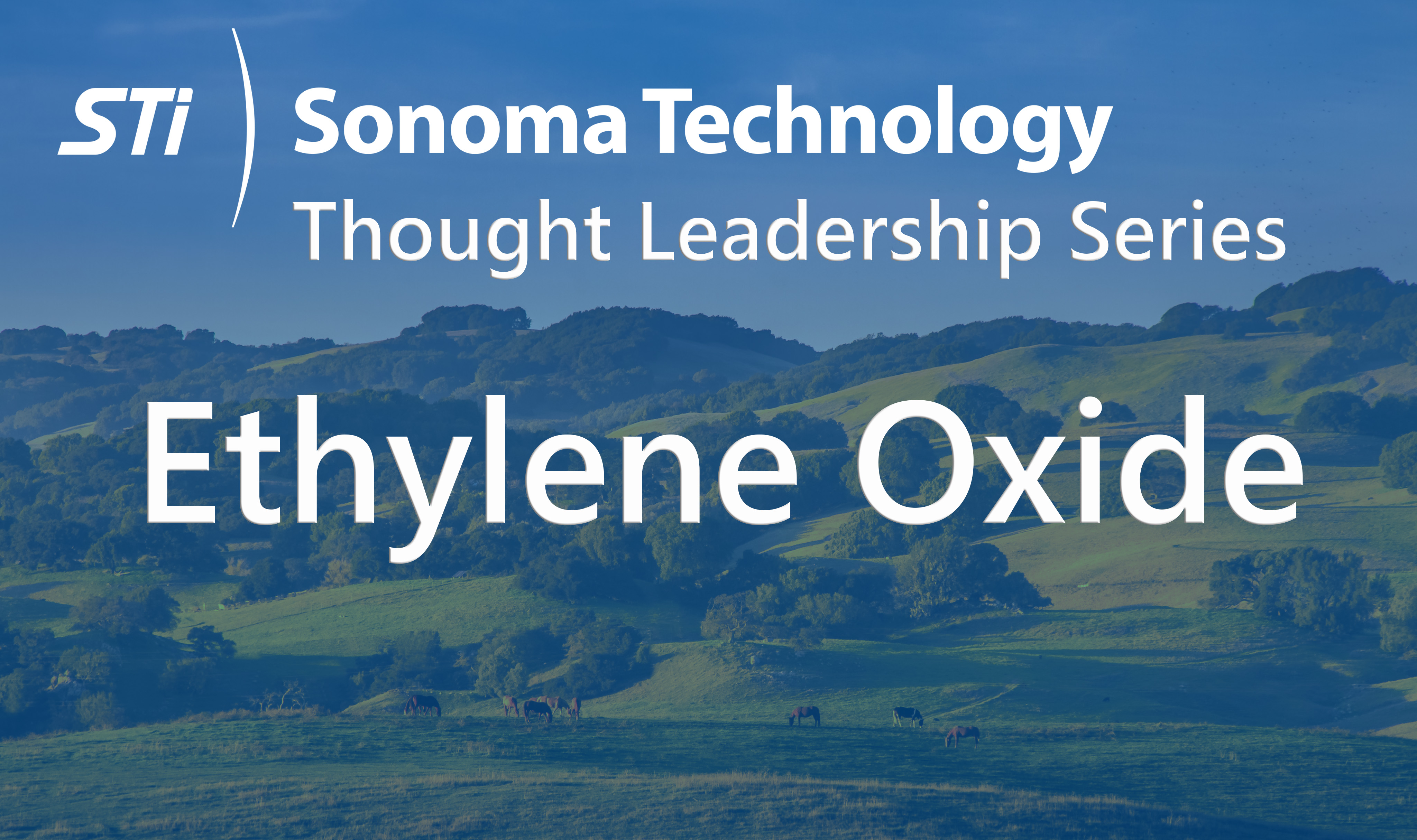Published September 2023
Ethylene oxide (EtO) is a colorless, odorless, gaseous volatile organic compound (VOC) widely used to manufacture ethylene glycol, sterilize medical devices, and fumigate certain foods and cosmetics. EtO sterilization is one of the main methods for sanitizing medical and dental equipment that can’t undergo steam sterilization, which include any doctors’ tools made from plastic. The U.S. Food and Drug Administration estimates that nearly 50% of all medical devices in the United States are sterilized using EtO annually, which amounts to roughly 20 billion pieces of equipment per year.
Multiple potential health risks are associated with both exposure to high EtO concentrations and prolonged periods of exposure. My colleague Dr. Steven Schill covered the state of regulations in an article from April 2022. Currently, updated regulations have been proposed at the Federal Environmental Protection Agency (EPA) level and at the local district level in California that will require manufacturing and sterilization facilities that produce and use EtO to implement more stringent controls on potential emissions and to conduct fenceline monitoring.
Background: EtO Recognition as a Health Risk
EtO was confirmed as a carcinogen by the EPA in December 2016, and the Integrated Risk Information System (IRIS) database for human health assessments of chemicals found in the environment was updated at that time. The EtO inhalation unit risk was found to be between 0.1 and 10 parts per trillion (ppt) based on EPA’s report Evaluation of Inhalation Carcinogenicity of Ethylene Oxide, which also states that health risks may exist at the sub-ppt level. This risk level remains significantly below the minimum detection levels that available and emerging technologies can achieve.
The revised high-risk determination has prompted public health and occupational exposure concern among environmental and community groups. The new regulatory actions under consideration have been proposed to reduce that risk.
Emerging Federal Regulations
This concern has led to two new federal regulations, one for the sterilization industry and one for the chemical production industry. Proposed in April 2023, both sets of regulations have gone through public comment periods as well as litigation, resulting in court-imposed rule implementation deadlines of March 1, 2024. Once passed, facilities will have a predetermined length of time to comply.
HON Rule – The EPA has proposed regulations that would make new source performance standards (NSPS) and national emissions standards for hazardous air pollutants (NESHAP) significantly stricter for the synthetic organic chemical manufacturing industry (SOCMI) and groups I and II of the polymers and resins sector. The HON rule, which stands for hazardous organic NESHAP, would implement stricter limits on emissions, introduce fenceline air monitoring requirements for numerous chemicals (EtO, chloroprene[1], benzene, 1,3‑butadiene, ethylene dichloride, and vinyl chloride), and change the way health risks are evaluated. Rather than evaluating health risks by tracking sources in the SOCMI – or polymer-source categories, they would be assessed based on a community risk model that holistically considers distance from major industrial facilities. Although other chemicals are included in this proposed regulation, ethylene oxide is receiving much of the attention due to its risk profile and the measurement challenges.
The regulation requires passive sorbent tube sampling for most of the other target compounds. This is a proven method that is consistently used under the Refinery Risk and Technology Review (RTR) regulation. Informed by previous EtO studies, the HON Rule proposes a new method for measuring EtO that better considers interference from other compounds. However, the new rule would require extensive additional quality assurance under proposed measurement Method 327, which is a modification of Compendium Method TO-15A. This additional quality assurance could be challenging for laboratories and facilities to implement.
Federal Insecticide, Fungicide Rodenticide Act (FIFRA) Sterilization Facility Rule – This rule is part of a legislation effort proposed by the EPA that would strengthen Clean Air Act standards for EtO use and emissions from sterilization and fumigation facilities. When passed, it will significantly decrease EtO emissions and implement controls within and around facilities to reduce occupational exposure for workers. In the current proposed regulation, facilities would be required to implement EtO controls within 18 months of the rule’s issuance. Once implemented, this rule is estimated to reduce EtO emissions by 80%.
Proposed California State Regulations
As a frequent leader in toxic emissions reduction activities, the South Coast Air Quality Management District (AQMD) in California has proposed EtO monitoring and emissions regulations for sterilizations that are more strict than the federal limits being discussed.
Proposed Amended Rule 1405: Control of Ethylene Oxide Emissions from Sterilization and Related Operations – This proposed rule would reduce EtO emissions from sterilization operations and impose strict limits, including 0.01 parts per million (ppm) or lower EtO concentrations and no more than 0.015 pounds per hour (lbs/hr) of EtO emissions from all exhaust stacks. The regulation would also require implementation of complex control systems to ensure air inside facilities is safe for workers; monitoring along facility fencelines would also be required. The proposed rule also includes mobile monitoring and a classification scheme intended to reduce use and control emissions. This rule is currently in the workshop phase, so further changes may result.
What’s Next?
While industrial advocates claim the proposed measures could result in a shortage of sterilized medical equipment and make it near-impossible to affordably use EtO in manufacturing, which would have major economic impacts, environmental and community groups have encouraged the EPA to broaden the proposed regulations even further. Many health advocates want regulations to include off-site warehouses and require stringent fenceline monitoring networks to ensure the safety of surrounding communities and reduce environmental justice disparities.
All three proposed rules are currently under review. The EPA extended the period for public comment on both proposed rules, and the California rule is still under discussion and does not have the March 1, 2024, implementation deadline that applies to the federal regulations.
________________
[1] Chloroprene is only of concern for a single facility.

Ryan C. Moffet

